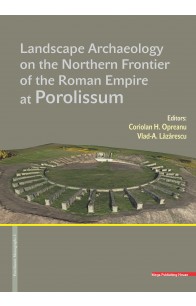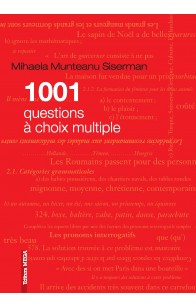Rezultate căutare pentru 'Ioan Oprea'
Link -> http://www.z-studarch.ro/
CONTENTS
Octavian Cristian Rogozea
Discoveries Attributed to the Early Vinča Phase in Tărtăria “Gura Luncii” (Alba County). The 214 Preventive Archaeological Researches Performed on “Site 10B”
Georgeta El Susi
Animal Bones from the Neolithic (Szakalhat) Levels at Uivar (Timiş County)
Victor Sava, Florin Mărginean, Adrian Ursuţiu
The Eneolithic Cemetery in Pecica “Est” (Arad County)
Tünde Horváth
Budakalasz, ein besonderer Bestattungsplatz der Badener Kultur. Kritische Anmerkungen zum Buch: Maria Bondar – Pal Raczky (Red.): The Copper Age cemetery of Budakalasz
Tobias L. Kienlin, Klára P. Fischl, Liviu Marta
Exploring Divergent Trajectories in Bronze Age Landscapes: Tell Settlement in the Hungarian Borsod Plain and the Romanian Ier Valley
Călin Ghemiș
The Late Bronze Age Gold Ring Discovered in Betfia (Bihor County, Romania)
Liliana Daniela Mateescu-Suciu
Glass Recipients from Sarmizegetusa Regia. Unguentaria and Bottles
Horațiu Cociș
The Rural Landscape of the Frontier of Dacia Porolissensis. A Case Study: the Northern Sector –
territorium Arcoba(da)rense – The Valley of River Someșul Mare
Norbert Kapcsos
Sarmatian graves from Pecica Site 18. Remarks upon the phenomenon of „isolated” graves from the Cris-Tisa-Mures region
Ioan Stanciu
On Early Medieval Roasting Trays and their Presence in the Settlements from the North-Western Part of Romania
Călin Cosma, Adrian Bolog, Ovidiu Oargă
Avar Graves Recently Discovered in Gambaș (Alba County) on the Spot Called “Ogoarele de jos”
Dan Băcueț-Crișan, Gruia Fazecaș, Doru Marta
An Early Medieval Feature Discovered in Oradea – Salca “Ghețărie” (Petrom Gas Station)
Daniela Tănase, Gábor Bertók, Anita Kocsis, Balázs Major
The location of Egres Cistercian monastery – Igriş (Timiș County), in the light of recent geophysical research
Florin Mărginean, Zsolt Csók, Keve László, Victor Sava
Unveiling History. Archaeological Excavations in the Fortress of Ineu (Arad County)
Dorel Micle, Bogdan Alin Craiovan, Andrei Stavilă, Octavian-Cristian Rogozea
The Times before Fischer’s Furniture Store. The Preventive Archaeological Researches in Sfântul Gheorghe Square 2–3, Timișoara (Timiş County)
Andrea Demjén, Florin Gogâltan
The Ciuc-Ghimeș Quarantine (18th–19th Centuries). Archaeological Researches of the Former Customs Point “Cetatea Rakoczy”
Abbreviations
„The frontiers of the Roman Empire, over 5000 km long, stretch from the Atlantic coast of Scotland, along the Rhine and the Danube, also enclose the Banat region and Transylvania, then going down along the Oriental Carpathians to the Black Sea; from the southern coast of the Black Sea they continue towards the Near East until the Red Sea; then, in North Africa, they line the edge of the Sahara desert until the Atlantic coast of Morocco. Over this entire area, visible traces of fortifications, roads and settlements are still preserved, but numerous monuments still lay hidden underneath the earth. Despite the fact that the Roman frontiers crossed regions with different relief and climate, they constitute a whole in that they were designed to protect Roman territories. The research of these monuments and the preservation policy regarding them was and is unequal in the various presentday states on whose territory traces of the Roman frontier are to be found. Consequently, in the ‘80s of the 20th century, the idea of globally protecting the Roman frontiers, viewed as a unitary monument, was met. In 1987, Hadrian’s Wall in United Kingdom was declared a UNESCO monument. It was followed in 2005 by the German-Raetian sector, on which occasion the UNESCO committee decided to set up the ‘Frontiers of the Roman Empire’ site. (...)
This project through its complexity generated an interdisciplinary approach of the proposed subject stimulating such future attempts in the archaeological research field. By using the latest technical methods of non-destructive investigation the project did not damage the stratigraphy of the archaeological site obtaining instead a high amount of data otherwise time consuming judging from the archaeological excavations perspective contributing also to the preservation of the cultural heritage.” - Introduction
"Mihaela Munteanu Siserman, maître de conférences à la Faculté des Lettres de Baia Mare, partie intégrante de l’Université Technique de Cluj-Napoca, depuis 2020 habilitée à diriger des thèses de doctorat en linguistique, est un esprit curieux, qui poursuit sans cesse de nouvelles découvertes, étant entièrement consacrée au travail dur et, en même temps fructueux, dans le domaine des sciences du langage.
Ayant fini ses études universitaires à la Faculté des Lettres de Baia Mare, la spécialisation langue et littérature roumaines – langue et littérature françaises, l’auteure continue sa formation par des études en master en linguistique générale à l’Université « Babeş-Bolyai » de Cluj-Napoca (1998). (...)
Le livre unit l’analyse et la synthèse des problèmes grammaticaux et s’évertue à éclairer de multiples facettes de la grammaire française, en laissant des traces sur l’âme et l’esprit des lecteurs et mettant en évidence la dynamique créatrice de la langue." (lect. univ. dr. Ioana Bud)
Preț Normal: 150,00 LEI
Special Price 130,00 LEI







